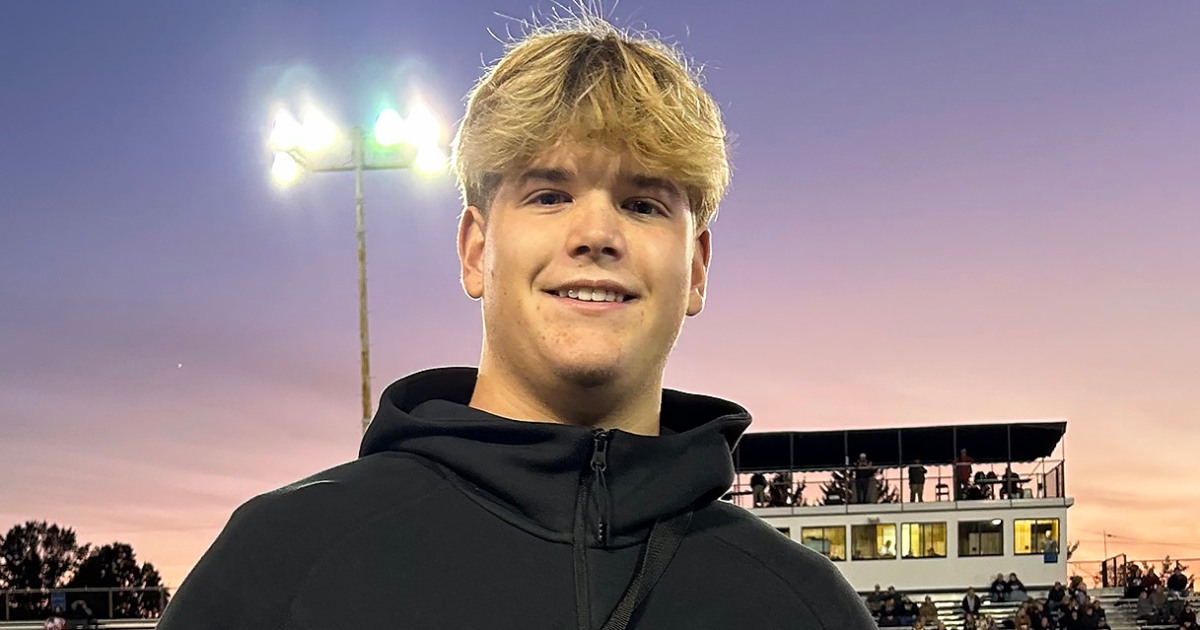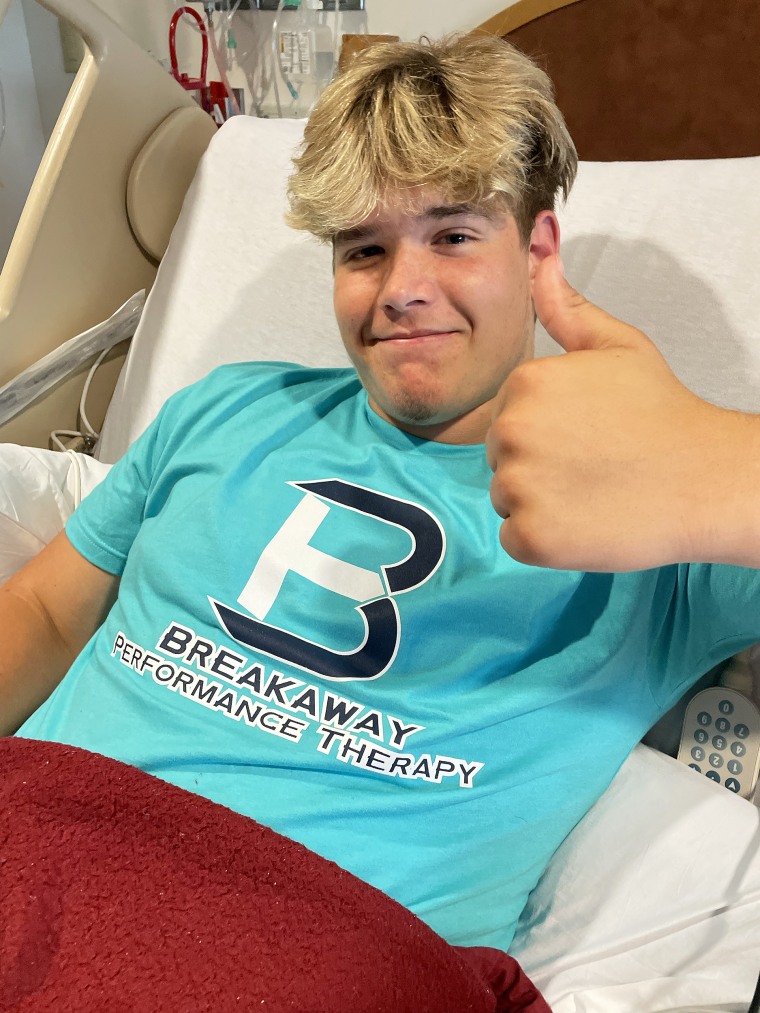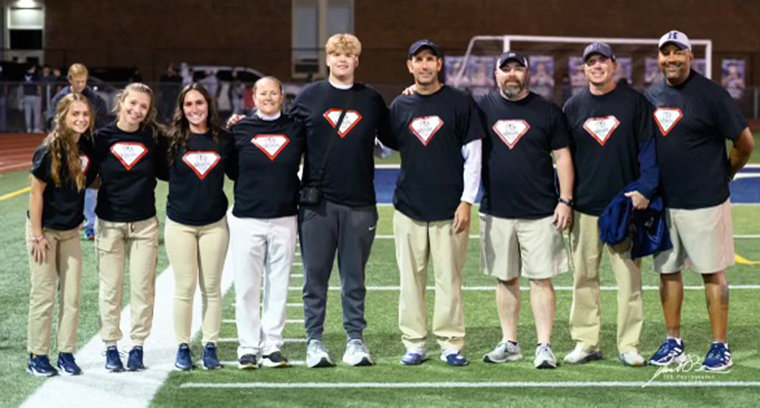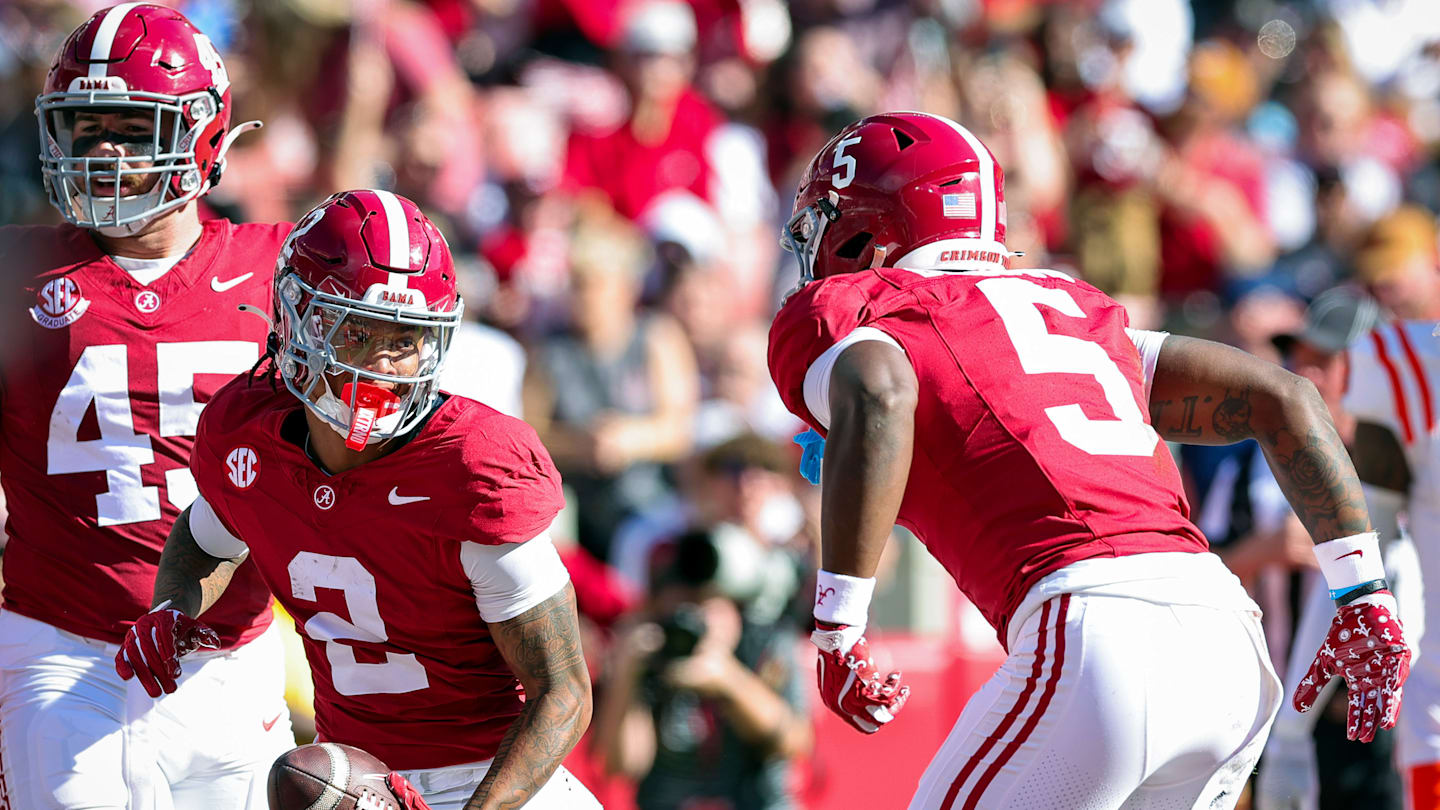High school football player experiences cardiac arrest after hit. Coaches saved his life with this tool

As Spencer Davis, 16, returned a punt as part of a special teams play during practice in September 2024, another player crashed into him. Coach Rodney Chism heard the hit and saw Spencer crumple as if he “had the wind knocked out of him.” Soon, Chism could tell Spencer experienced a serious injury.
“His hands were clenched. His body was clenched, and he appeared to be unconscious,” Chism, a football coach at Hollidaysburg Area Senior High School in Pennsylvania, tells TODAY.com. “I began to call … his name, ‘Spencer. Spencer. Spencer,’ and grab one of his hands to see if it would unclench. At which point it did not.” As Spencer’s lips turned blue, Chism and another coach tore off Spencer’s helmet and pads and started CPR. Head football coach and athletic director Homer DeLattra called for the trainer to get an automated external defibrillator, or AED, to the field immediately. The quick action from the athletic staff likely “saved his life,” mom Jennifer Davis says.
“He required two shocks before the ambulance got there,” Davis, 48, of Hollidaysburg, Pennsylvania, tells TODAY.com. “On the ambulance ride over he was conscious. He still didn’t know what was going on, but he was screaming in pain.”
Cardiac arrest at practice
Spencer has played on both the offensive and defensive lines on his high school football team. During practice on September 8, 2024, he and his teammates were learning how to cover another team’s punt when he was hit. His only memories from that day are what others have told him. His mom, though, was walking near the field as he practiced. As Davis neared the field she saw a player lying on the ground.
“Kids get hurt in football all the time. I couldn’t see who it was,” she says. “I was about halfway down and the head coach came over and he was like, ‘Jenny you need to go over there, that’s Spence.’”
She learned that her son “took a hit to the chest” as she saw several football coaches taking turns performing compressions on her son.
“I got up to his head and I was like, ‘Spence, I’m here. Hang on buddy,’” Davis recalls. “He started breathing on his own and within seconds he went back into cardiac arrest. His eyes rolled behind his head. His lips turned a color of grayish blue that I’ll never forget.”
That’s when the athletic trainer arrived with the AED and the coaches put it on Spencer’s chest and it showed that he had a shockable rhythm.
“That walked us through it from that point,” Chism says. “We were able to find a heartbeat as we were performing compressions. I thought I was finding a pulse. But the AED clearly identified that and told us to stop CPR.” Then the machine proceeded to shock Spencer to revive him.
Chism had experience performing CPR before and the team regularly reviews its emergency action plan, which helps them understand how to handle something like a cardiac arrest. As part of that they annually train in using the Zoll AED. Still, he was unnerved by the experience.
“It’s very very physically demanding and mentally draining,” he says. “Thank God we had a positive outcome.”
By the time the ambulance arrived, Spencer was awake. While his mom worried about his screaming, she was glad that “he was with us.”
“When we got to the hospital, they took him into a room and we could still hear him screaming and at one point (a doctor) yelled out, ‘He’s wiggling his toes. It’s a good sign,’” Davis says. “They said everything they had done tests (for) … were coming back normal and everything looked like classic signs of commotio cordis.”
Commotio cordis happens when a “sudden blunt impact to the chest” causes cardiac arrest, explains Dr. George Jabbour, one of the cardiologists who treated Spencer. It’s considered “rare but it’s a very serious condition.” Buffalo Bills safety Damar Hamlin experienced cardiac arrest after commotio cordis in January 2023 and has since recovered and returned to football, according to past TODAY.com reporting.
Doctors explained to the Davis family that the diagnosis was one of exclusion, so they wanted to run more tests on Spencer to make sure he didn’t have an underlying structural problem with his heart or an unknown heart condition.
When Davis saw her son in the hospital, he was confused.
“He kept asking me, ‘Mom, what happened?’” she says. “He was like ‘I love you. I’m sorry I don’t know what happened.’”

Spencer’s ribs were broken from CPR, which likely caused his agonizing pain. But he also aspirated while being revived and doctors transferred him to UPMC Children’s Hospital of Pittsburgh where he could be monitored by pediatric specialists to help him fully heal. He needed high-flow oxygen to help him as his lungs recovered. For two days he was in the pediatric intensive care unit receiving oxygen as he slowly stabilized. Even before he was weaned off oxygen, Davis knew her son felt better when he asked to have his phone to finish his fantasy football roster for the weekend.
“He was doing so much better,” she says. “The only thing was he couldn’t breathe on his own.”
While a scan uncovered a small brain bleed at the back of Spencer’s head, he did not experience a concussion. Doctors believed he sustained the injury when he fell without bracing himself.
“He still hit (his head) pretty hard,” Davis says. “By the time they re-checked it, it was better. There was no more bleeding.” Luckily, his neurological tests showed that Spencer did not experience any deficits from the cardiac arrest.
“(This) is a direct result of the quickness that the coaches responded with starting the CPR,” Davis says. “We were in the hospital for seven days and I would say every single day a different doctor would come in and tell us we needed to thank our first responders because they literally saved his life.”
Commotio cordis and cardiac arrest
According to the American Heart Association, fewer than 10 people experience commotio cordis annually. It occurs when a person receives a blow to the chest that jolts the heart out of its normal rhythm.
“It happens in a specific time of the heart’s electrical cycle where the electricity of the heart is disrupted,” Jabbour tells TODAY.com. “Rather than your heart beating normally it goes into a different rhythm called ventricular fibrillation.”
When people experience ventricular fibrillation, the heart stops pumping and causes “full-blown cardiac arrest.” Ventricular fibrillation occurs in a lot of situations, such as heart attack, aorta problems or cardiomyopathy, the American Heart Association notes. Quick intervention including CPR and proper use of an AED can save someone’s life.
“If you take a look at out-of-hospital cardiac arrests, one in 11 people will survive. So about almost 80 percent— 85 percent of patients who have out-of-hospital cardiac arrest don’t make it,” Jabbour says. “If you start doing CPR, if it’s done well, it increases your likelihood by about 20 percent or 25 percent.”
But he adds that only about 40 percent of patients will receive bystander CPR and even then it might not be protective because it’s not been performed correctly. An AED plus CPR can make an even greater difference, Jabbour notes.
“Let’s say you’re doing CPR. CPR is not going to restore the patient back into normal heart rhythm if they are in ventricular fibrillation,” he says. “Defibrillating the patient with an AED will probably help them get back into normal rhythm.”

What’s more, quick bystander action can help prevent a person from experiencing brain injury.
“Spencer’s actual hiatus was 13 minutes before the EMS got there,” Jabbour says. “By nine minutes without CPR even if you get them back after the fact, they are not going to make it.”
While Spencer’s experience was scary, he can return to normal life because he doesn’t have any ongoing heart problems.
“Spencer is now happily back to his own routine,” Jabbour says. “If you take a look at why Spencer survived he’s a one-of-a-kind case because everything aligned so well for him.”
‘Do something about it’
When Spencer was in the hospital he wanted to call his team to wish them well on their first game without him. Testing delayed the call so he reached out after and learned that they won. He also felt it was important that he talk to the student who tackled him.
“I knew someone felt responsible for that and I didn’t want them to have that on their shoulders,” he tells TODAY.com. “He was shook up a bit.”
For a while, Spencer felt depressed but when he thought of Hamlin, the professional football player who’d experienced the same thing, he felt better.
“He just gave me hope to keep pushing and keep going,” Spencer says. “I was really emotional and my mom asked me what I wanted to do with this. And she was like, ‘We can either dwell on it and sulk or do something about it.’”
Spencer decided he wanted to help others.
“If it happens to someone else I wanted them to be in the same shoes as me,” he says. “I wanted to make sure they were alive.”
The family started the Spencer Davis Foundation “to spread awareness, to teach CPR and AED,” Davis says. When Spencer returned home, he wore a Zoll Life Vest, an external defibrillator for a month in case he experienced another cardiac arrest. He didn’t and was able to stop wearing it. It took about three months for the pain to lessen so Spencer could sleep comfortably. His stamina also recently returned.
While Spencer’s activities remain unrestricted, he is not returning to football but instead plans to focus his efforts on baseball instead. He’s learned a lot since his experience with commotio cordis.

“Going to bed and waking up every morning is not guaranteed,” he says. “A teacher is not required to be CPR trained. A coach is not required to be CPR trained … It’s life or death. I’m standing here as a miracle.”
Related
Does Michigan Football have the experience to make the College…
The Michigan Wolverines made it to the College Football Playoff for the first time in 2021 after beating Ohio State and winning the Big Ten Championship. Sin
Alabama football’s 2025 WR room is giving “Ryde Outs” vibes
Alabama football's WR room stagnated in the final years of the Nick Saban era in Tuscaloosa. The Crimson Tide went from a dominant run of recruiting and develop
Big 12 opener, historic Classic highlights HBCU football schedule
Courtesy of UAPB Athletics PINE BLUFF, AR.– The University of Arkansas at Pine Bluff Golden Lions football team has announced its 2025 HBCU football s
Top ten Ohio State football players entering 2025
There's great news, and just some OK news for the Ohio State football program. The great news is that the Buckeyes made good on their "national title or bust" s












